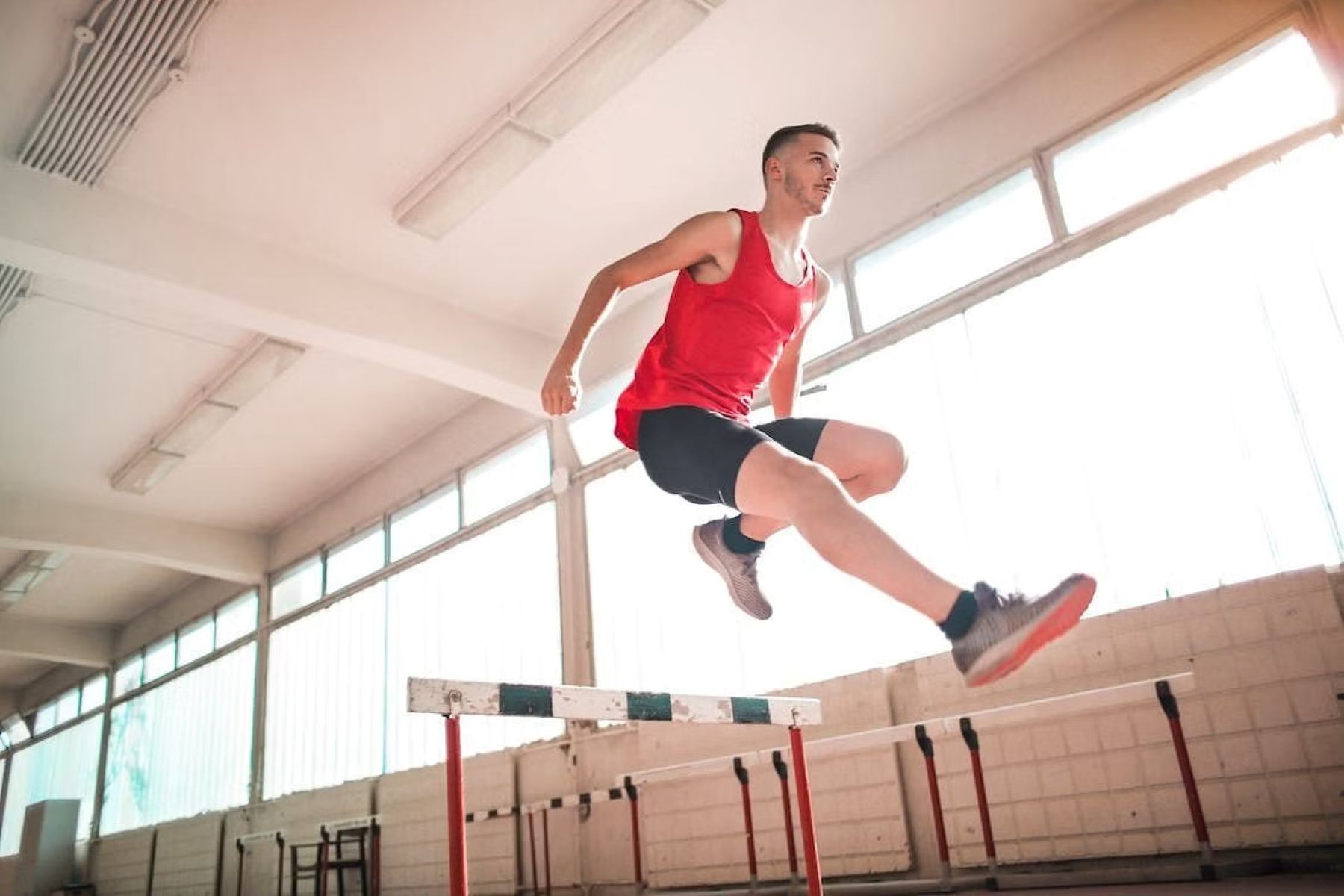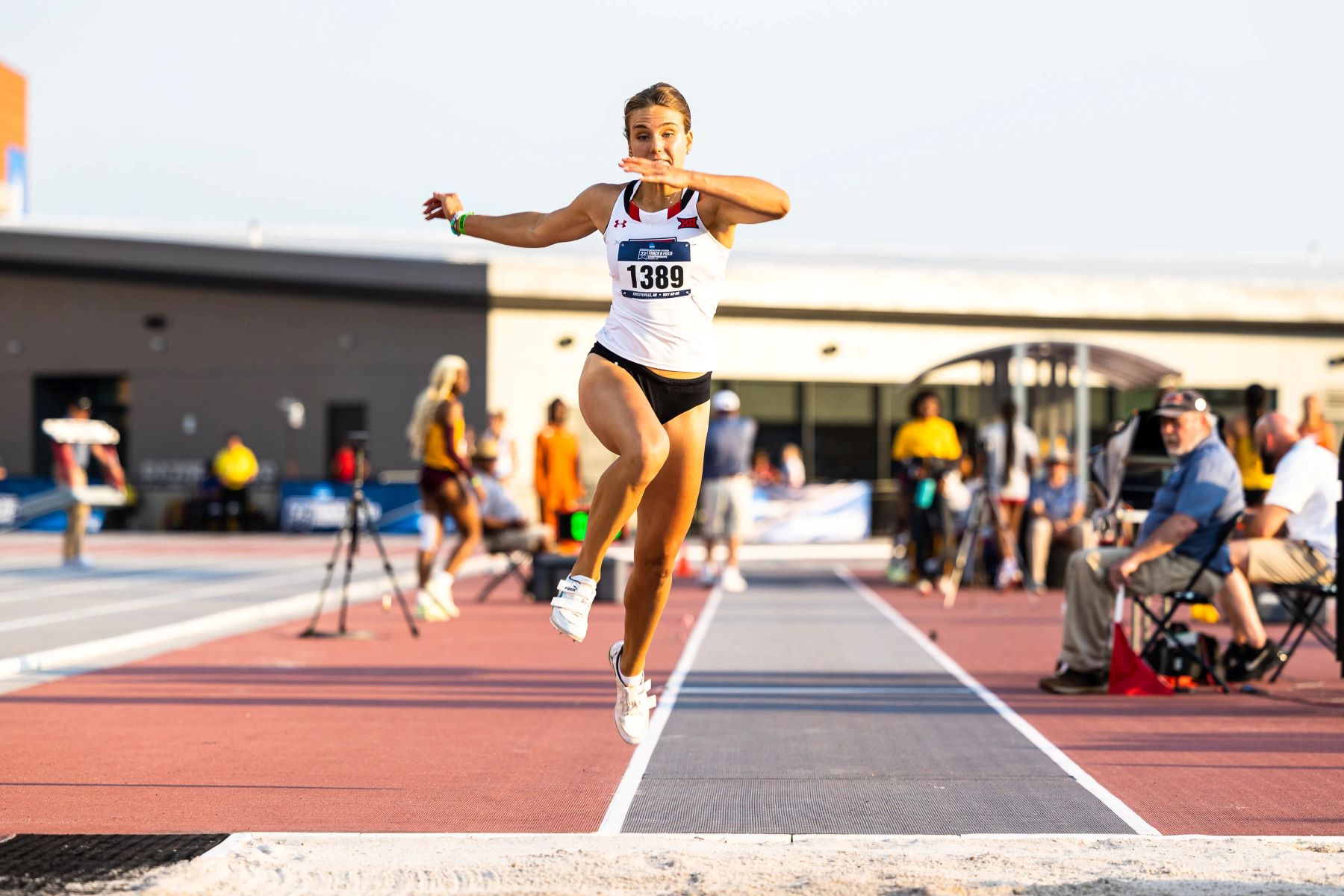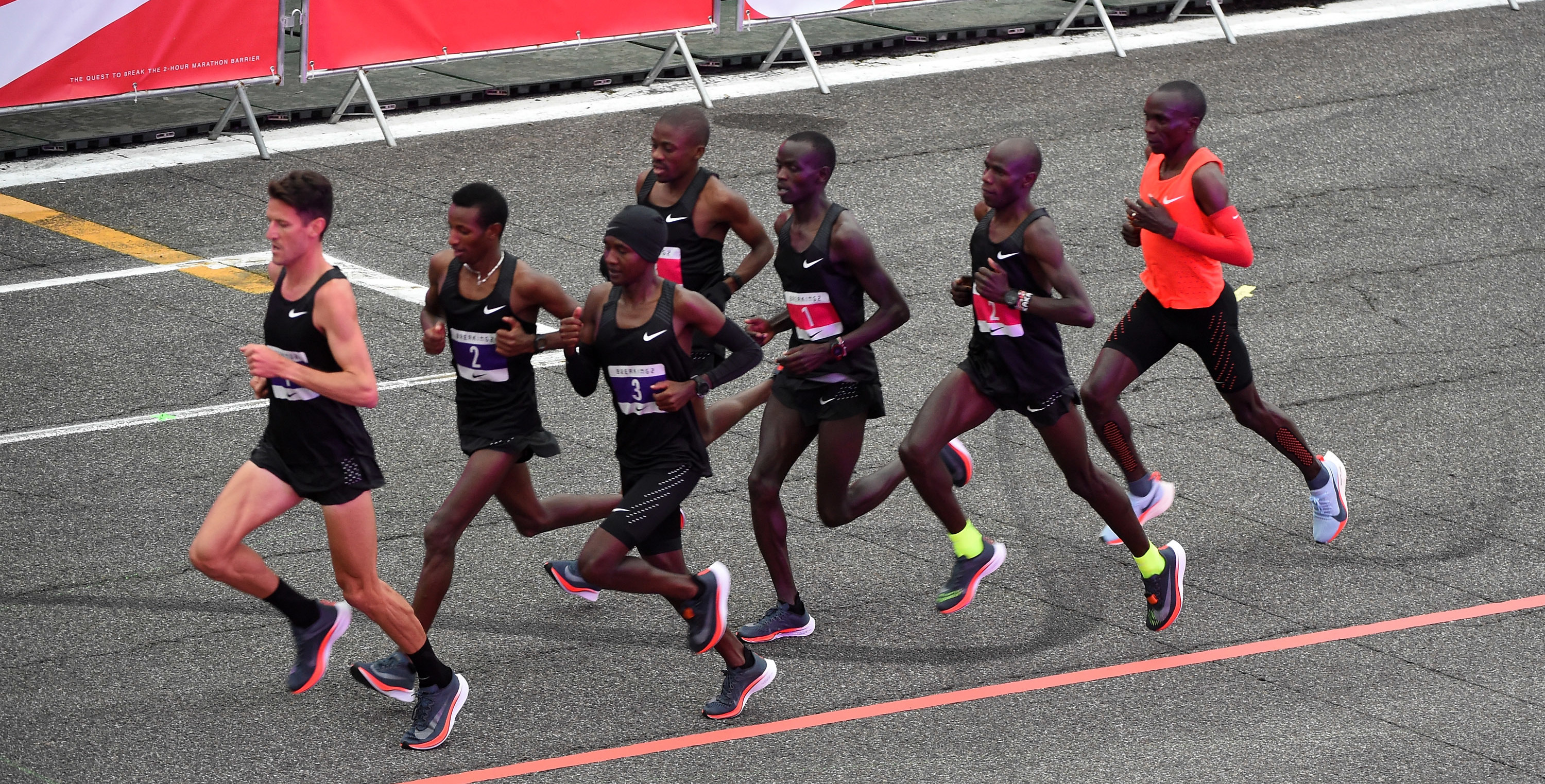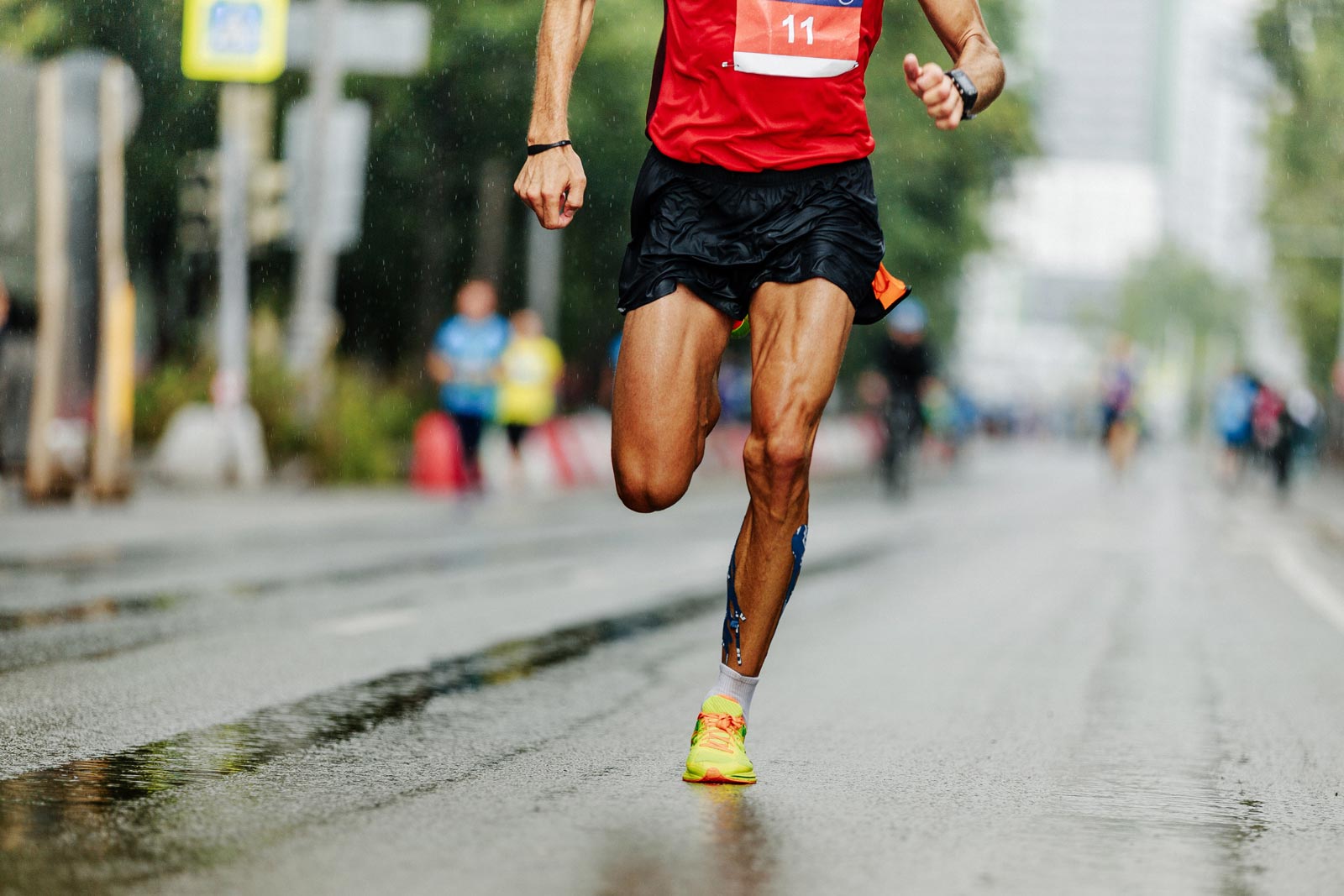Home>Misc>Featured>Which Of The 7 Physical Fitness Components Would Describe Long Distance Running?
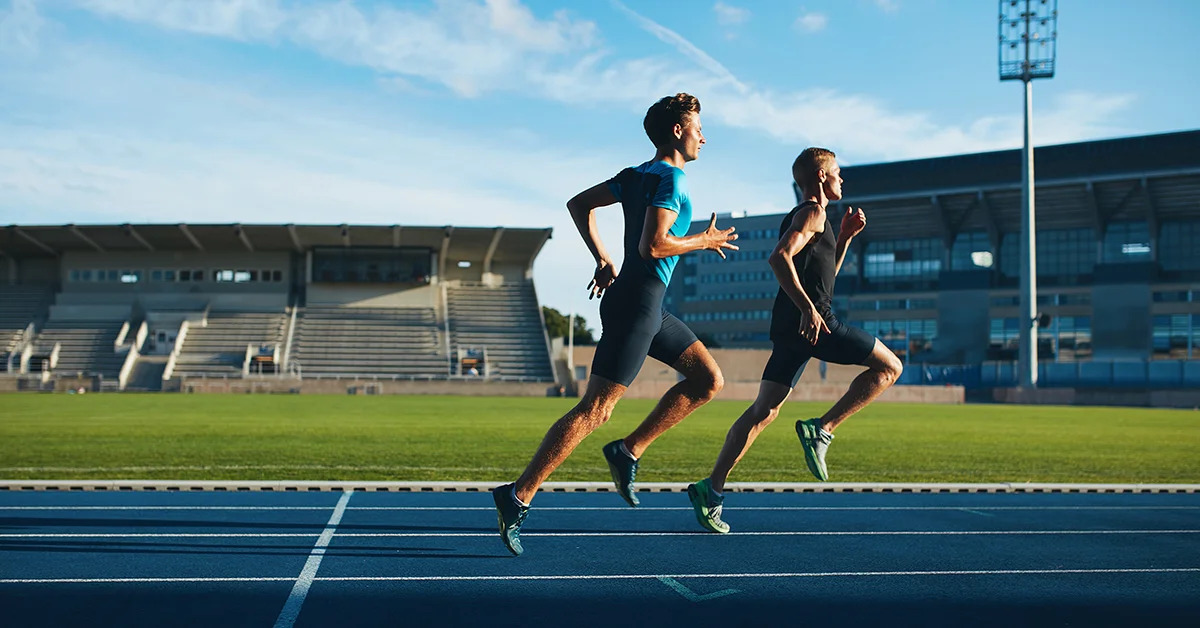

Featured
Which Of The 7 Physical Fitness Components Would Describe Long Distance Running?
Modified: August 22, 2023
Discover the key physical fitness component that defines long distance running in this featured article. Enhance your endurance and stamina with this comprehensive guide.
Introduction
Long distance running is a sport that requires a unique combination of physical fitness components to succeed. It is not just about running long distances; it is about endurance, strength, and mental resilience. To excel in long distance running, athletes need to achieve a high level of fitness across multiple dimensions.
In this article, we will explore the seven physical fitness components that best describe long distance running. These components are essential for runners to maintain optimal performance, prevent injuries, and reach their full potential on the track or road.
Long distance running places significant demands on the cardiovascular system, muscles, flexibility, and overall body composition. Endurance plays a pivotal role in sustaining prolonged effort, while strength, speed, and power contribute to efficient running mechanics.
By understanding the specific fitness components required for long distance running, athletes can tailor their training programs to improve in the areas that are most crucial for their performance. Whether you are a seasoned marathoner or an aspiring long-distance runner, this article will provide valuable insights into the physical attributes needed for success.
Cardiovascular Endurance
Cardiovascular endurance refers to the ability of the heart, blood vessels, and lungs to supply oxygen and nutrients to the working muscles during exercise. It is one of the most critical fitness components for long distance running.
When you go for a run, your cardiovascular system is responsible for delivering oxygen-rich blood to your muscles, allowing them to keep contracting and performing at a high level for an extended period. Without adequate cardiovascular endurance, fatigue will set in quickly, limiting your ability to sustain a fast pace or cover long distances.
To improve cardiovascular endurance, long distance runners engage in activities such as distance running, interval training, and cross-training exercises like cycling or swimming. These activities help strengthen the heart muscle, improve lung capacity, and enhance the efficiency of the cardiovascular system.
Regular aerobic exercise increases the size and strength of the heart, allowing it to pump more blood with each beat. It also expands the network of blood vessels, improving blood flow to the muscles. Through consistent training, runners can elevate their aerobic capacity and delay the onset of fatigue during long runs.
It’s important to note that developing cardiovascular endurance takes time and consistent effort. Gradually increasing the duration and intensity of your runs, along with incorporating other cardiovascular exercises into your routine, can help stimulate adaptations and improve your endurance over time.
Incorporating interval training, where you alternate between high-intensity and low-intensity efforts, can also be beneficial. This method challenges your cardiovascular system and helps improve your ability to sustain a faster pace during races or training sessions.
Overall, cardiovascular endurance is absolutely essential for long-distance running. It allows you to maintain a steady pace, resist fatigue, and complete races with optimal performance. By incorporating targeted training methods and consistently challenging your cardiovascular system, you can enhance your endurance and take your long-distance running to new heights.
Muscular Endurance
Muscular endurance is a crucial component of physical fitness for long-distance running. It refers to the ability of your muscles to sustain repeated contractions over an extended period without fatigue. In other words, it’s the ability to keep running without your muscles giving out.
Long distance runners rely heavily on muscular endurance to maintain a steady pace and cover the miles. This endurance is especially important for the leg muscles, including the quadriceps, hamstrings, calves, and glutes.
To improve muscular endurance, long-distance runners incorporate strength training exercises that target the muscles used in running. These exercises may include bodyweight exercises, like lunges and squats, as well as resistance training using weights or resistance bands. By progressively increasing the resistance or number of repetitions, runners can build muscular endurance and delay the onset of fatigue during runs.
In addition to strength training, incorporating regular running drills and hill training can also help improve muscular endurance. Running drills focus on specific muscle activation and coordination, while hill training challenges the muscles to work harder against the incline, boosting endurance and strength.
It’s important to note that while strength training is beneficial for muscular endurance, long-distance runners should also prioritize maintaining a balance between strength and weight. Excessive muscle mass can hinder running efficiency and increase the energy demands of each stride.
Proper nutrition and adequate recovery are also essential for optimal muscular endurance. Consuming a balanced diet that includes an adequate amount of carbohydrates, protein, and healthy fats helps fuel the muscles and promote recovery. Giving your body enough time to rest and recover between training sessions is equally important to avoid overuse injuries and allow the muscles to adapt and become stronger.
By focusing on improving muscular endurance, long-distance runners can enhance their ability to maintain a consistent pace throughout their runs. Strong and enduring leg muscles ensure better running mechanics, reduce the risk of injury, and ultimately improve overall performance.
Flexibility
Flexibility is a critical physical fitness component for long-distance running. It refers to the range of motion in your joints and muscles, allowing for smooth and efficient movement. Maintaining adequate flexibility is essential for preventing injuries and optimizing running performance.
Long-distance runners rely on flexibility to achieve an optimal running posture and stride length. Flexible muscles and joints allow for a wider range of motion, reducing the risk of strains and imbalances. It also helps runners efficiently absorb impact forces during each step, minimizing the impact on joints and muscles.
To improve flexibility, long-distance runners should incorporate regular stretching exercises into their training routine. Dynamic stretching before a run helps warm up the muscles and increase their range of motion, preparing them for the activity ahead. Static stretching after a run helps lengthen and relax the muscles, promoting recovery and preventing stiffness.
Key areas to focus on for flexibility in long-distance running include the hamstrings, quadriceps, calves, hip flexors, and lower back. Stretching exercises for these muscle groups can enhance flexibility and reduce the risk of common running injuries like shin splints, IT band syndrome, and muscle strains.
In addition to stretching, practices like yoga or Pilates can be beneficial for long-distance runners. These activities not only improve flexibility but also promote core strength, balance, and body awareness, all of which contribute to better running mechanics and efficiency.
It’s important to note that while flexibility is crucial, there is a balance to be struck. Overly flexible joints and muscles without adequate strength can lead to instability and a higher risk of injury. Therefore, it’s important to combine flexibility training with strength training to maintain ideal running mechanics and optimize performance.
Regularly assessing and addressing your flexibility needs can help identify areas of tightness or imbalances that may limit your running potential. By incorporating targeted stretching exercises and other flexibility-enhancing activities, long-distance runners can improve their range of motion, reduce the risk of injuries, and run with ease and efficiency.
Strength
Strength is a crucial physical fitness component for long-distance running. While endurance is often the focus, strength plays a vital role in maintaining proper running form, preventing injuries, and improving overall performance.
Long-distance runners need strength in their leg muscles to support their body weight and power through each stride. Stronger muscles also allow runners to generate more force with each step, resulting in a more efficient and powerful running stride.
To improve strength, long-distance runners incorporate strength training exercises into their training regimen. These exercises may include weightlifting, bodyweight exercises, or resistance training using machines or bands. Focusing on compound exercises that work multiple muscle groups simultaneously, such as squats, lunges, deadlifts, and calf raises, can be especially beneficial for runners.
It’s important to note that strength training should not solely focus on the legs. Upper body and core strength are also essential for maintaining proper posture and stability while running. Incorporating exercises like push-ups, pull-ups, planks, and Russian twists can help develop a well-rounded strength foundation.
In addition to traditional strength training exercises, incorporating plyometric exercises can also enhance running performance. Plyometrics involve explosive movements like jump squats, box jumps, and bounding drills, which help improve leg power and speed.
Proper form and technique are crucial when performing strength exercises. Working with a certified strength and conditioning specialist or a knowledgeable coach can ensure that you execute exercises correctly and safely while targeting the specific muscles used in running.
Maintaining a balanced approach to strength training is important for long-distance runners. While it’s beneficial to develop strength, excessive muscle mass can hinder running efficiency. Finding the right balance between strength and weight is key to optimizing performance.
Consistency is essential when incorporating strength training into a long-distance running routine. Aim for two to three strength training sessions per week, allowing enough recovery time in between to promote muscle growth and prevent overuse injuries.
By incorporating strength training exercises that target the muscles used in running, long-distance runners can enhance their overall strength, improve running mechanics, and reduce the risk of injuries. Incorporating strength training into your routine can take your long-distance running to the next level.
Body Composition
Body composition refers to the proportion of fat, muscle, and other tissues in your body. It plays a significant role in long-distance running, as it affects overall performance and running efficiency.
A lean body composition is ideal for long-distance runners. Carrying excess body fat can increase the energy demands of running and hinder speed and endurance. Additionally, excessive body weight puts more stress on the joints and can contribute to a higher risk of injury.
Improving body composition involves maintaining a healthy balance between body fat and muscle mass. This is achieved through a combination of regular aerobic exercise, strength training, and a balanced diet.
Long-distance runners incorporate high-intensity interval training (HIIT) and steady-state cardio exercises into their training routine to burn calories and reduce body fat. Additionally, strength training exercises help build lean muscle mass, which helps improve metabolism and overall body composition.
A balanced diet is crucial for optimizing body composition. Runners should focus on consuming a variety of nutrient-dense foods such as lean proteins, fruits and vegetables, whole grains, and healthy fats. Proper hydration is also important for overall health and performance.
Understanding your individual calorie needs and ensuring a slight caloric deficit can help reduce body fat while still meeting energy requirements for training and recovery. However, it’s important to avoid drastic calorie restrictions that can negatively impact performance and overall health.
Working with a registered dietitian or nutritionist who specializes in sports nutrition can provide personalized guidance on fueling your body for long-distance running and achieving an optimal body composition.
It’s worth noting that body composition is highly individual and can vary among different athletes. What works for one runner may not work for another. Therefore, it’s important to focus on improving personal body composition rather than comparing oneself to others.
By maintaining a healthy body composition through a balanced diet, adequate exercise, and proper hydration, long-distance runners can optimize their performance, improve running efficiency, and reduce the risk of injuries.
Speed
Speed is a crucial physical fitness component for long-distance running, even though it may seem contradictory at first. While long distance running is often associated with endurance rather than speed, having the ability to increase your pace can significantly enhance overall performance.
Improving speed involves developing your anaerobic capacity and working on your running mechanics to achieve a more efficient stride.
Interval training is a popular method used to improve speed in long-distance running. This involves alternating between bursts of high-intensity running and periods of active recovery. The high-intensity intervals challenge your body to work at a faster pace, boosting your ability to maintain a faster speed during long runs or races.
Another essential aspect of speed improvement is working on your running form and technique. Proper running mechanics, including arm swing, foot strike, and body position, can make a significant difference in your overall speed and efficiency.
Regular drills and exercises that target running mechanics, such as stride length and cadence, can help improve speed. These may include uphill sprints, resistance band training, and form-focused drills like high knees and butt kicks.
Strength training plays a role in speed development as well. Building overall strength, particularly in the lower body, can provide more power for each stride, facilitating faster running speeds.
It’s important to note that speed development takes time and consistent effort. Gradually increasing the intensity and duration of your speed workouts, while also allowing for adequate recovery, is key to making progress without overexerting yourself.
Proper warm-up and cool-down routines are crucial to prevent injuries and optimize speed development. Incorporating dynamic stretching and mobility exercises before speed workouts can help prepare your muscles and reduce the risk of strains or pulls.
Overall, focusing on improving speed in long-distance running can help you become a more well-rounded and efficient runner. By incorporating interval training, working on running mechanics, and building overall strength, you can enhance your ability to maintain faster paces, overtake competitors, and achieve your running goals.
Power
Power is a lesser-known but important physical fitness component for long-distance running. While endurance is the primary focus, having adequate power can enhance sprinting ability, improve running efficiency, and aid in surges during races or challenging terrain.
Power is the combination of strength and speed and is the ability to exert force quickly. This explosiveness is crucial for quick acceleration, efficient stride turnover, and maintaining pace during sudden uphill sections or sprints towards the finish.
To develop power, long-distance runners can incorporate plyometric exercises into their training routine. Jumping exercises like box jumps, bounding, and skipping can help improve leg power. These exercises require rapid bursts of force, engaging fast-twitch muscle fibers and enhancing power output.
Strength training exercises that focus on explosive movements can also contribute to power development. Olympic lifts, such as cleans and snatches, as well as medicine ball throws, can improve power by engaging multiple muscle groups simultaneously and improving the coordination of movement.
However, it’s important to note that power training should be incorporated in moderation and with the guidance of a knowledgeable coach or trainer. Too much focus on power development may increase muscle mass, which can hinder endurance and running efficiency.
In addition to specific exercises, hill training can also help develop power in long-distance runners. Running uphill requires a powerful push-off to overcome the resistance of gravity and maintain momentum. Incorporating hill sprints or hill repeats into your training routine can improve leg power and simulate race-day conditions.
Proper warm-up and technique are crucial when undertaking power training exercises. Starting with lower intensity and mastering the correct form will reduce the risk of injuries and allow for gradual progression.
It’s important to remember that power development is only one aspect of long-distance running and should be balanced with other fitness components such as cardiovascular endurance and muscular endurance.
By incorporating power training exercises into your training routine, you can enhance your running efficiency and have the ability to generate quick bursts of speed, making you a more versatile and competitive long-distance runner.
Conclusion
Long-distance running is a demanding sport that requires a diverse set of physical fitness components for success. Cardiovascular endurance is essential for sustained effort, while muscular endurance ensures the ability to maintain a steady pace. Flexibility enhances running mechanics and reduces the risk of injuries, while strength provides power and efficiency in each stride. Achieving a proper body composition optimizes performance, and speed and power improve overall running capabilities.
By understanding and prioritizing these physical fitness components, long-distance runners can tailor their training programs to optimize their performance. Incorporating targeted exercises, such as interval training for speed and plyometrics for power, can enhance specific areas. Regular stretching and strengthening exercises improve flexibility and muscular endurance, while a balanced diet supports an ideal body composition.
It’s important to remember that improving in each of these components takes time, patience, and consistency. Strive for gradual progress and always listen to your body, allowing for adequate rest and recovery to avoid overuse injuries.
Ultimately, long-distance running is a journey of continuous improvement and personal growth. By embracing the importance of these physical fitness components and dedicating yourself to a well-rounded training approach, you can elevate your performance, achieve your running goals, and experience the joy and fulfillment of long-distance running.
